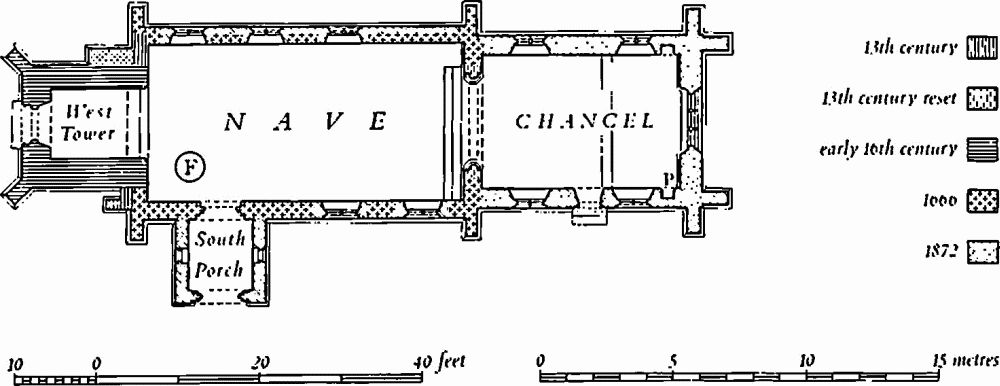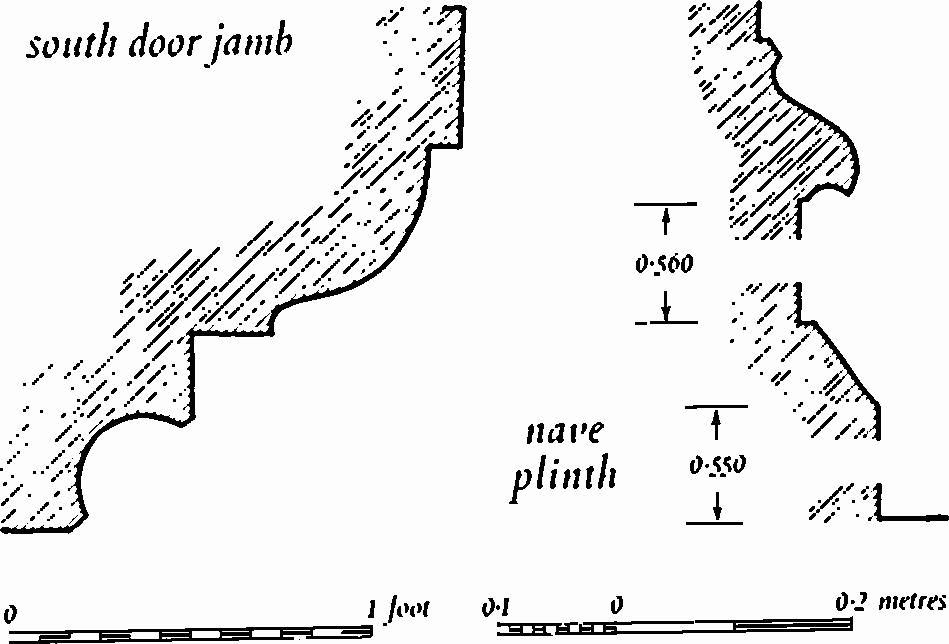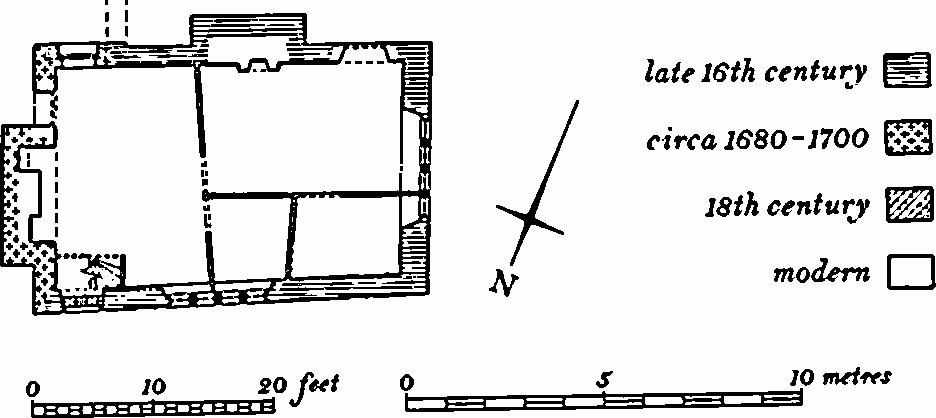An Inventory of the Historical Monuments in the County of Northamptonshire, Volume 6, Architectural Monuments in North Northamptonshire. Originally published by Her Majesty's Stationery Office, London, 1984.
This free content was digitised by double rekeying. All rights reserved.
'Hemington', in An Inventory of the Historical Monuments in the County of Northamptonshire, Volume 6, Architectural Monuments in North Northamptonshire(London, 1984), British History Online https://prod.british-history.ac.uk/rchme/northants/vol6/pp89-91 [accessed 1 February 2025].
'Hemington', in An Inventory of the Historical Monuments in the County of Northamptonshire, Volume 6, Architectural Monuments in North Northamptonshire(London, 1984), British History Online, accessed February 1, 2025, https://prod.british-history.ac.uk/rchme/northants/vol6/pp89-91.
"Hemington". An Inventory of the Historical Monuments in the County of Northamptonshire, Volume 6, Architectural Monuments in North Northamptonshire. (London, 1984), British History Online. Web. 1 February 2025. https://prod.british-history.ac.uk/rchme/northants/vol6/pp89-91.
In this section
13 HEMINGTON
Hemington is a parish of 548 hectares and lies on the Oxford Clay which is here covered by Boulder Clay. During the Middle Ages the parish was owned by the abbeys of Ramsey and Peterborough and was subsequently acquired by the Montagu family. One of the Peterborough manors was gained in 1488 by Thomas Montagu, and the Ramsey manor by his son Sir Edward, Chief Justice of the King's Bench, in 1540, by which time the other Peterborough manor had also been added. Members of the Montagu family lived at Beaulieu Hall (2) where they created elaborate gardens. Thomas Montagu was responsible for building the church tower in the early 16th century and the rest of the church was rebuilt in c. 1660 by Edward Montagu.
The parish was enclosed about the middle of the 17th century, Bridges recording eight houses in 1719 and saying that there had been more before enclosure. The village is still very small and consists mainly of late 19th-century cottages. Apart from the manor house and the church all buildings before 1850 were of timber-frame (photographs in NMR). The early 19th-century cottages (3) and a substantial 17th-century house recently demolished, have similar plans and construction to those of houses found in parishes further E.
Ecclesiastical
(1) The Parish Church of St. Peter and St. Paul (Fig. 110; Plate 73) stands close to the road at the S. end of the village. It consists of a Chancel, Nave, West Tower, and South Porch. Walls are of squared masonry except for the upper part of the N. wall of the nave and the tower which are of coursed rubble. Some features of the 13th century survive indicating that there was an aisled church of that date. At the N.W. external corner of the nave is a short length of horizontal weather-course probably associated with an aisle roof; a buttress of 13th-century character, S. of the tower, may be in line with a former S. arcade. Fragments of 13th-century date, not in position, include parts of capitals used in the present chancel arch, and capitals reused in the font base. The tower is in the late Perpendicular style and was probably built by Thomas Montagu early in the 16th century. The arms of Montagu are set over the W. door. On his death in 1517 he left 20 shillings for the repair of the church and the covering of the steeple with lead (NRO, A(1st series), 329, 1 Jan. 1514/15), showing that the tower was then complete except for its roofing. A description of the church in 1619 shows that it was mostly unpaved and that in the middle there was a post supporting a beam, which was both 'unseemly and insufficient' (NRO, Church Survey Books). In about 1666, at the instigation of Lord Montagu, the church was demolished except for the tower and the W. wall of the nave and was replaced by the simple rectangular building which survives in part (Bridges II, 401). The appearance of the church in the early 19th century, before the addition of the chancel, was recorded by Flesher (BL Add. MS 37411, p. 94). In 1872 a chancel and porch were added, and the nave windows were replaced by ones of Gothic design.
The late medieval tower, to which a building date can be assigned, and the nave rebuilt in the late 17th century are of interest although the architecture is not outstanding. The elaborate stalls from Fotheringhay are the principal fittings.

Fig. 110 Hemington Church
Architectural Description – The Chancel, added in 1872, is in the Decorated style. The Nave, mostly of c. 1666, have a wave-moulded plinth and two-stage buttresses. All the windows are 'Gothic' replacements of two and three-light mullion-and-transom windows (Flesher, loc. cit.; Clarke, Churches). The chancel arch of 1872 incorporates fragments of 13th-century capitals with nail-head decoration, and of a base. The S. doorway, with a heavily moulded round head, is 17th-century (Fig. 111). The Tower, of the early 16th century is in three external stages with three-stage angle buttresses and embattled parapets. The tower arch has a plain chamfered head and the W. doorway has continuous casement-moulded head and jambs. Above the door is a shield of arms of Montagu in a square frame. In the second stage the W. window has three lights and vertical tracery and that in the third stage has one light. The belfry windows are round-headed and of two lights.
The nave Roof, of c. 1666, is in four bays with the principal trusses having double collars; the lower collars have solid braces to wall posts and central carved bosses (Plate 59).
Fittings – Bells: four; 2nd, by Thomas Eayrc, 1724; 3rd, with Latin inscription and initials 'EM', probably for Edward Montagu, 1598 recast; 4th, inscribed 'Obe the Prince', undated (VCH, Northants. II, 82). Brasses: in nave, of Thomas Montagu, 1517, and Agnes (Dudley) his wife, two small figures, he in civil costume, rectangular plate inscribed in black-letter, two shields of arms of Montagu quartering a griffin segreant (a Montagu supporter), another shield of Montagu impaling Dudley of Clapton quatering Hotoft, and an indent for a fourth shield. Font: octagonal bowl, round stem with two reused and cut-down capitals, enriched with nail-head decoration, one under bowl, the other reversed at the foot, early 13th-century. Pulpit: small fragments of medieval tracery perhaps from a screen, incorporated in Victorian pulpit. Scratchings: on jamb of S. door, the date 166(7?). Seating (Plates 53, 55): in chancel, ten stalls originally at Fotheringhay, with elaborate ends carved with tracery patterns and heraldic motifs, terminating in crozier-like finials; misericords, carved with: on the N., mermaid flanked by fish, man drinking flanked by two barrels and a jug, falcon with fetterlock flanked by fetterlocks, crown flanked by foliage, dragon flanked by dragons' heads; and on S., helm with coronet and mantling, two boars saltirewise flanked by acorns, man standing on his head flanked by human heads, quadruped with human face flanked by heads in hoods, and an owl flanked by oak branches and birds.

Fig. 111 Hemington Church Mouldings 1666
Secular
(2) Beaulieu Hall (TL 095852) (Fig. 112; Plate 94), consists of a fragment of a large house probably built by Sir Edward Montagu in the late 16th century, on the site of an earlier house. Edward's father and grandfather had acquired the three Hemington manors between 1488 and 1540 (VCH, Northants. III, 80–1). Sir Edward died in 1602 and Beaulieu became the home of his widow, the main Montagu houses being at Barnwell and Boughton. The house was still standing in 1673 when it was recorded as having 17 hearths (PRO, E179/254/14), but was pulled down about a decade later (HMC, Buccleuch iii, 359). Only part of one wing was left and by 1861 this had become two cottages (Census); it is now unoccupied.

Fig. 112 Hemington (2) Remains of Beaulieu Hall
The remaining structure, two storeys and attics high, was apparently the N. cross wing of an H-shaped house. Internal fittings indicate that it consisted of a large parlour on the ground floor and a long room above. The W. gable has a parapet and finials; both ground and upper windows have mullions and transoms. Around the openings are recessed margins, and there is a string at first-floor level. The N. wall has similar windows but the upper is without a transom. At the E. end of the wall is a blocked doorway with a continuous chamfered four-centred head which probably led into a passage on the E. of the parlour and would imply a further room on the E. Within the blocking is a wooden window of c. 1500; if this window came from the former manor house it would suggest that much of that building was timber-framed. The S. wall has a wide chimney stack with two weathered setbacks, and to its E. is the stub of a wall belonging to the former main range at right angles. A reset doorway at the S.E. corner has the same ovolo moulding as the windows. The E. wall with a wide chimney stack and parapet is late 17th-century. Inside, the partitions are timber-framed and 18th-century; the E. fireplace has a cambered, chamfered, mantel beam. The S. fireplace formerly had 'an ancient chimney-piece of fine stone, reaching to the ceilings about 9 feet in width, with fluted columns, and of a most elegant and elaborate design' (Whellan, 710); it was removed in c. 1913 and is possibly that now in the Drawing Room at Boughton. The stair retains some solid wooden treads. On the first floor the room was originally undivided; it has a coved ceiling and moulded wooden cornice. The fireplace has a four-centred opening in a rectangular frame with sunk spandrels. Most of the 16th-century roof of five trusses remains, with principals clasping purlins, wind braces and queen posts rising from low collars which support the coved ceiling. Formerly an attic room occupied the two W. bays.
The gardens, contemporary with the house, survive as earthworks around it and incorporate part of an earlier moat (RCHM, Northants. 1, Hemington (3)).

Fig. 113 Hemington (3)
(3) Row of three class 4c dwellings (TL 092852), one storey and attics, timber-framed walls with brick infilling, thatched, brick stacks, early 19th-century (Fig. 113).
(4) Hemington Lodge (TL 094845), three storeys, class 6, c. 1800, but enlarged later in the 19th century. (Not entered)
